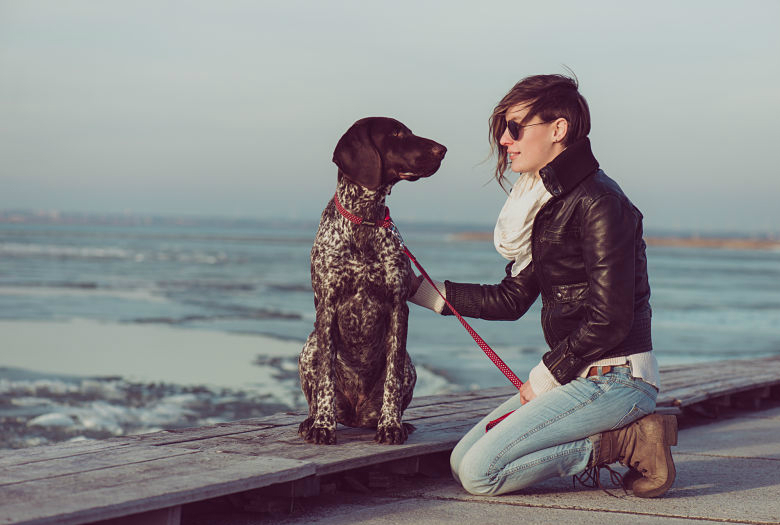Dog’s are exceptionally loyal creatures. They work hard to integrate into our homes, families and lifestyles and to be a team player who contributes to the family in their own special way. Given that dog’s don’t speak English (or whatever human language you may attempt to communicate with them in) it is pretty surprising how well they are able to assimilate into a human family dynamic.
Imagine living your entire life not being able to understand the majority of what those around you are attempting to communicate with you… it would be pretty difficult, right? Well, that is how your pup feels the majority of the time. The good news is that by understanding how dogs communicate, you can throw them a bone and speak their language a bit too. Doing so will most certainly strengthen the bond between you and your pet, will enhance your ability to command them and will further establish you as the leader of the pack that they respect and want to follow.
Rather than speaking words, dogs communicate in three ways: eye contact, body language and tone of voice. When these three elements combine (with a high degree of synchronicity) a pretty powerful means of communication emerges.
⇒ Eye Contact
Making eye contact with a dog, in the simplest terms, is like saying “yes” to them. In pack mentality, eye contact is interpreted as deferring to them as the leader. Translated into a modern household, eye contact is providing affirming attention to the dog (and dogs love attention). To communicate with a dog using this mode, only look your dog in the eye when they are exhibiting positive behaviors (coming when called or playing nicely, for example). Giving direct eye contact when the dog is not behaving as he/she should will reinforce that negative behavior.
⇒ Body Language
A primary way that dogs communicate with other dogs is using body language. Pointing in a direction with their entire body, pawing at something interesting, nudging another dog with their snout; canines communicate in all sorts of ways, and quite effectively, with their bodies. As a human, we probably don’t want to go and push a toy out of a dog’s grasp with our nose, but we can mimic this language to communicate with them. For example, when giving a command, the human should stand very tall and somewhat rigid to communicate that they are in control and leading the dog. If a dog is overly excited simply acting calm and mellow will likely communicate to them that they should calm down as well. Of course, body language is important when dogs are exhibiting negative behaviors as well. If a dog takes something, chasing them gives the signal that taking things initiates play (rather than telling them “give me that back” like you intend).
⇒ Tone of Voice
While unable to form words, dogs still communicate using sounds. Think of the different barking sounds your dog makes – scared, warning, excited, playful. Think of whining sounds like when they want attention, food or have been hurt. As a human communicating with a dog, we can mimic these sounds as well. Three distinct tones, when used regularly, can guide your dog to better interpret the behavior you desire from them: a happy tone, authoritative tone and disciplinary tone. The happy tone should be used when your dog does something good – like returns from fetching a toy on command. It is soothing and reassuring, like a proud grandmother to their grandchild. The authoritative tone is used when giving commands (like sit, stay and come). It is a middle ground tone that is firm but not too grandma or drill sergeant. Finally, the disciplinary tone is one used when corrective action is required. It should sound disapproving and disappointed.
It is pretty cool that by thinking primitively we can better communicate with our dog’s. Give it a try and remember that consistency is key. It will take some time for your dog to interpret and adapt to your new way of speaking to them, but it will most certainly be worth it in the end!

